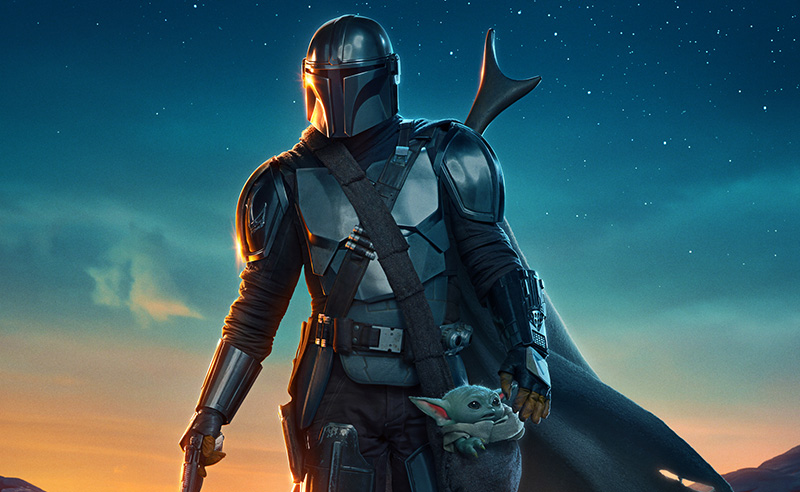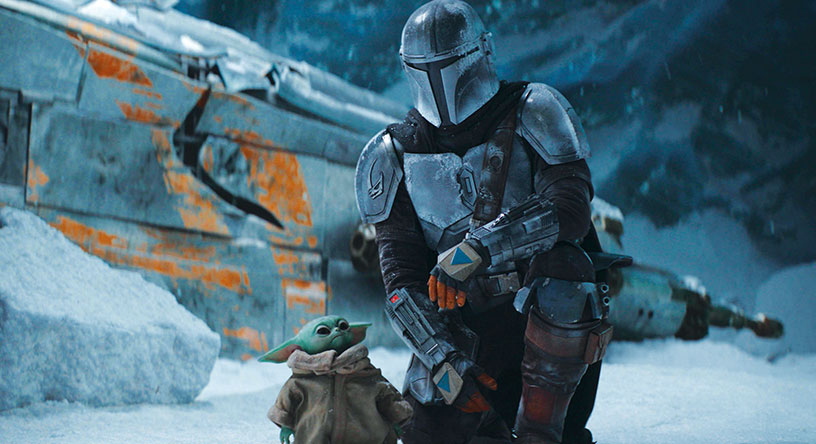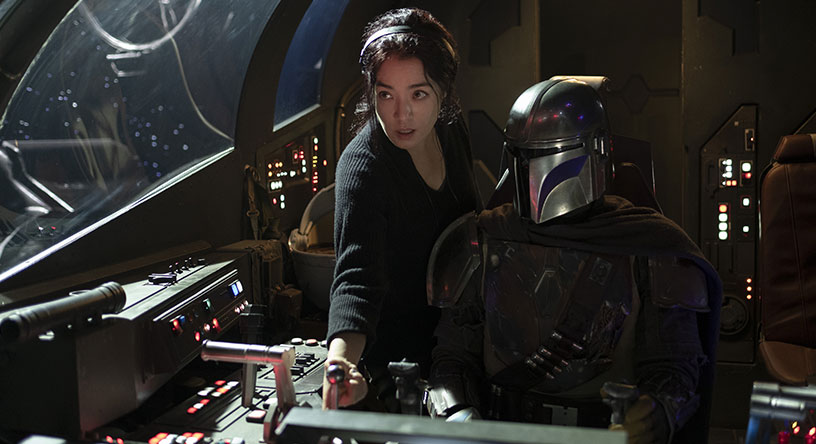

In an instant, the sky brightens and the seemingly endless forest is suddenly behind the camera. The colossal doors to a guarded village open slowly, revealing a new set in the grayish blue light of dawn. The transition in the environment is smooth and takes on an effortless quality. “The Mandalorian” season one and two both take on magical qualities of seamless transitions from one otherworldly set to the next. When the audience isn’t immersed in the uncanny forest with Tano, they’re in the air with Cara Dune (played by Gina Carano) flying a ship through the crevices of towering mountains in the bright light of day, walking through the desert before sunset alongside The Mandalorian (played by Pedro Pascal) and Grogu (David Acord), and more.
“PEOPLE KNOW THEY CAN DO MORE, SO IT OPENS A PANDORA’S BOX FOR PEOPLE TO CONSIDER SHOOTING AT 10 DIFFERENT LOCATIONS. A DESERT SCENE BY MONDAY AND A BEACH SCENE BY FRIDAY. VIRTUAL PRODUCTION DOES NOT KEEP PEOPLE BEHOLDEN. WITH SOME PROJECTS WE CREATE 25 DIFFERENT LOCATIONS.”
-NICK RIVERO, MEPTIK STUDIOS CO-FOUNDER AND CTO“

Now, virtual sets can be built before going into principal photography. The results are groundbreaking. The location backdrops are drafted by VFX artists as 3D models. Then, photographic scans are mapped onto the stage. Practical set pieces are combined to create a lush mise en scene.
Extended reality, known as XR, is a term that refers to a combining of the real and virtual worlds. In XR, human and machine interaction is generated by computer technology and wearables. The X in XR signifies the variable for any current or future spatial computing technologies. Spatial computing was defined in 2003 by Simon Greenwold, as “human interaction with a machine in which the machine retains and manipulates referents to real objects and spaces.” This includes augmented reality (AR), mixed reality (MR), and virtual reality (VR).
According to Business Wire, the virtual production market was valued at 1,463.46 million USD in 2020 and is projected to reach 4,744.04 million USD by 2028. Virtual production is an umbrella term to describe the emerging technology which uses software tools to combine computer graphics and live action footage in real-time. This cutting edge technology cuts costs on location scouting, art department, and more. With this enhanced technology, executing creative ideas becomes a more intuitive rather than arduous process.
While the virtual production masterminds behind “The Mandalorian” are the pioneers in XR stages, companies all around Georgia are offering competing technologies that are worth delving into.
In an interview with Nick Rivero of MEPTIK Studios, a Georgia-based company that specializes in immersive environments for virtual and extended reality (XR) production and experiential design, real time content, and projection, he broke down the three Rs of virtual production for Oz readers: “VR: Virtual Reality you put on a headset, changes your perception, AR: Taking the digital and putting it into the physical i.e. Instagram, PokemonGo, XR: Using the digital world to create entirely new and immersive environments.”






